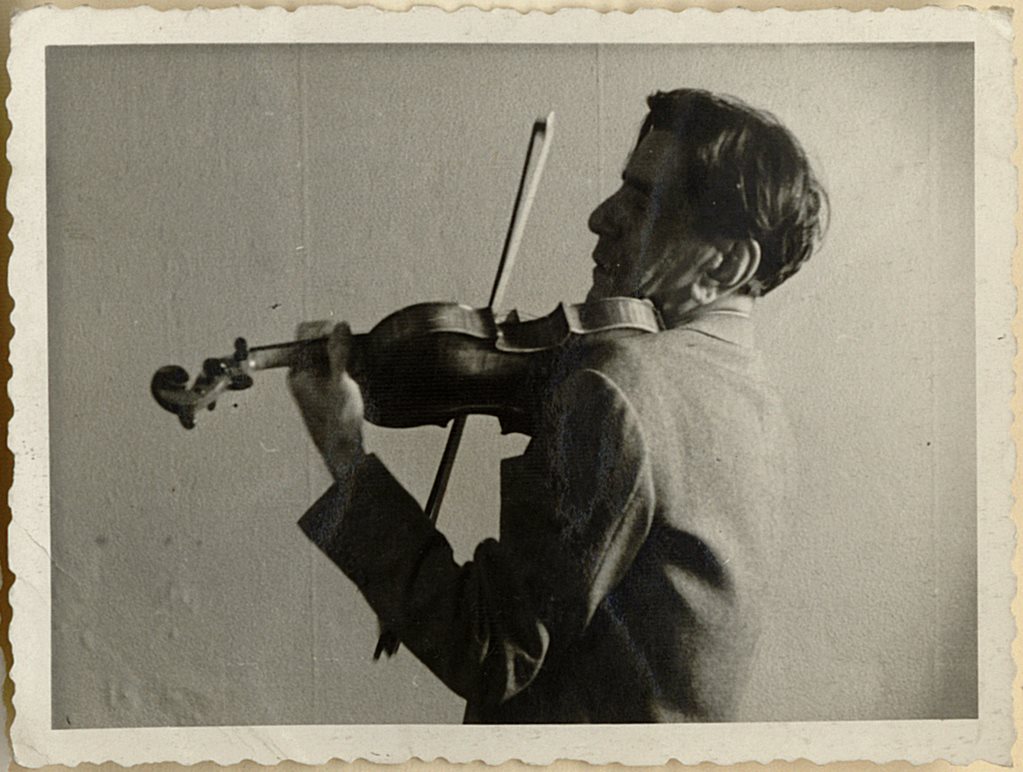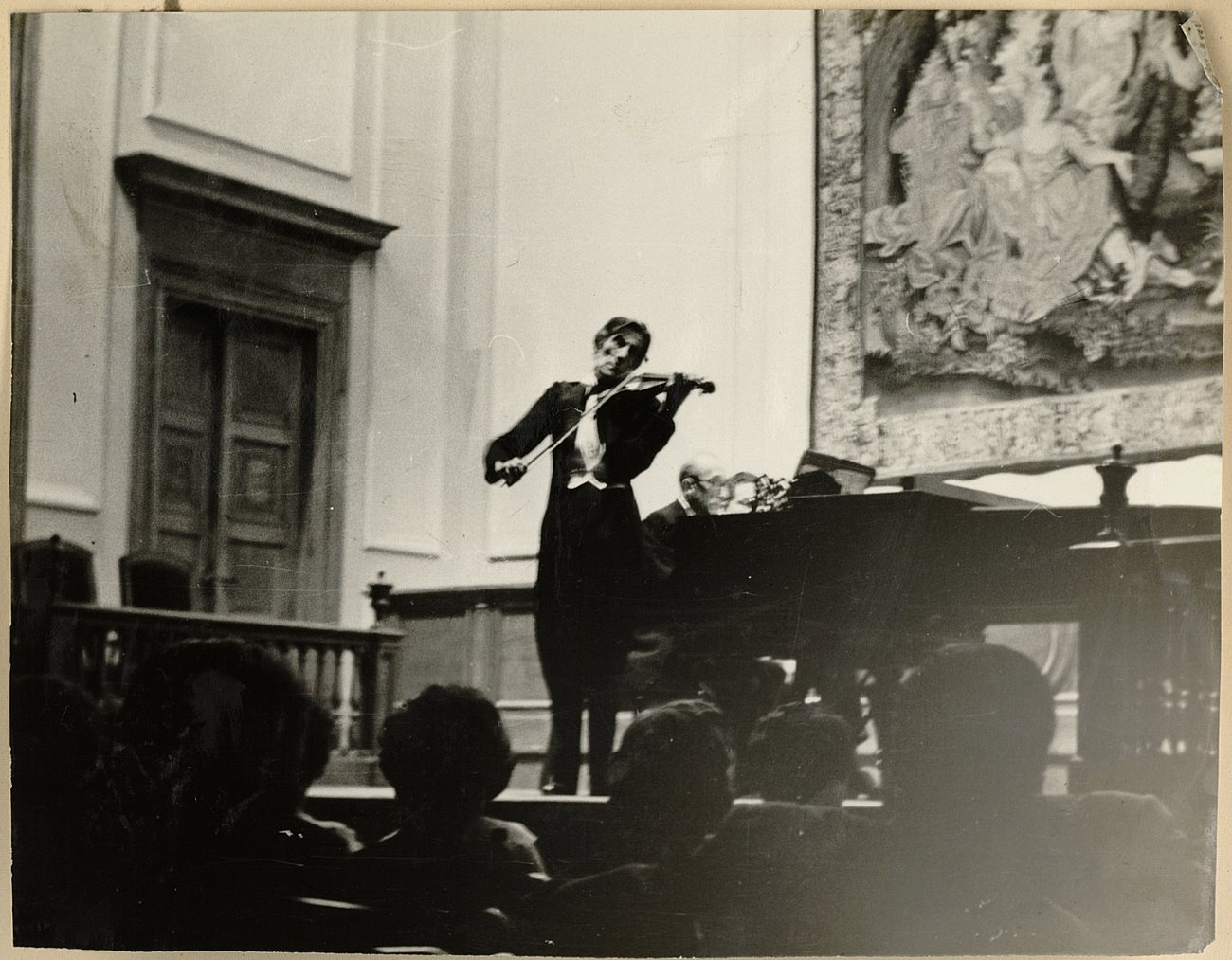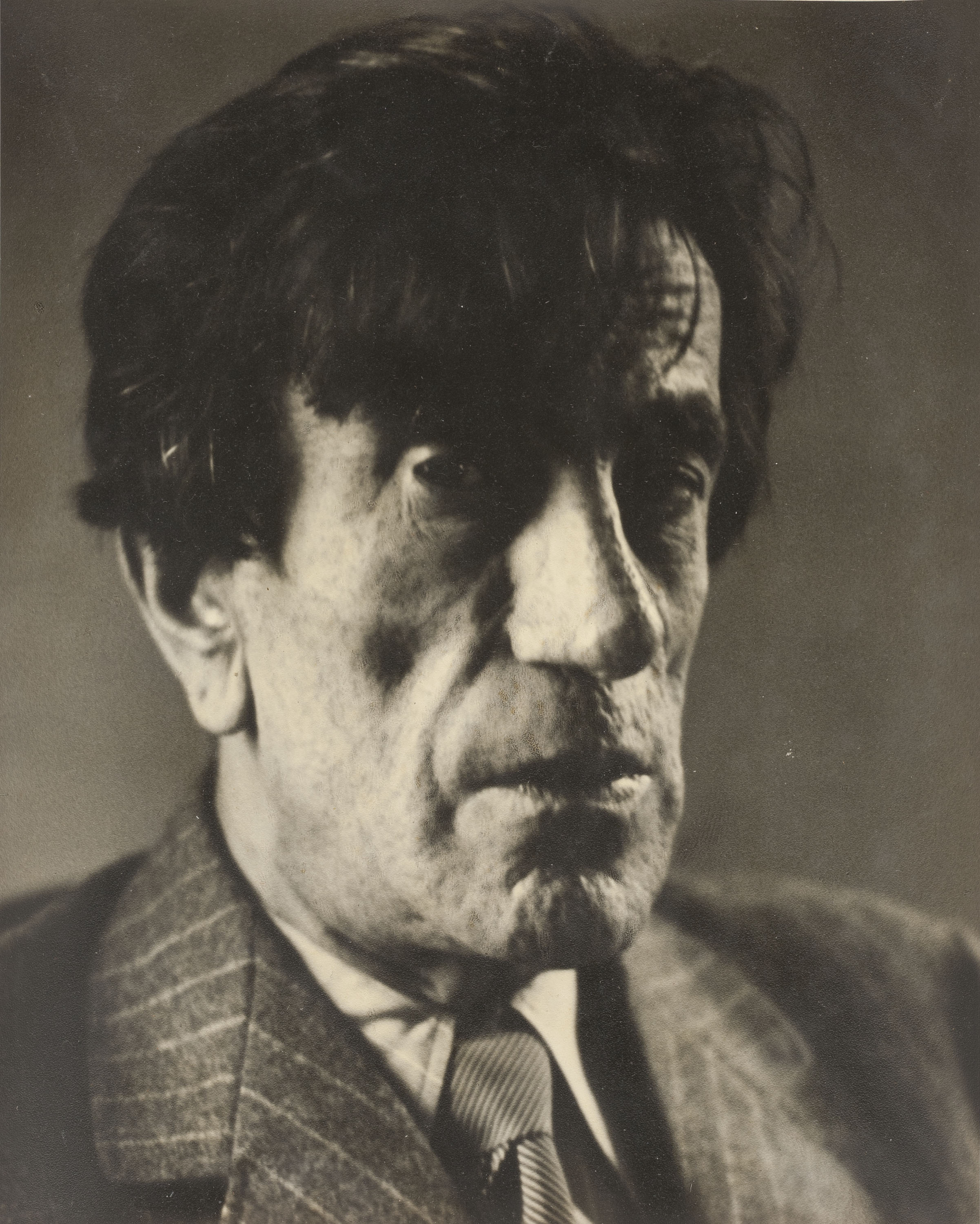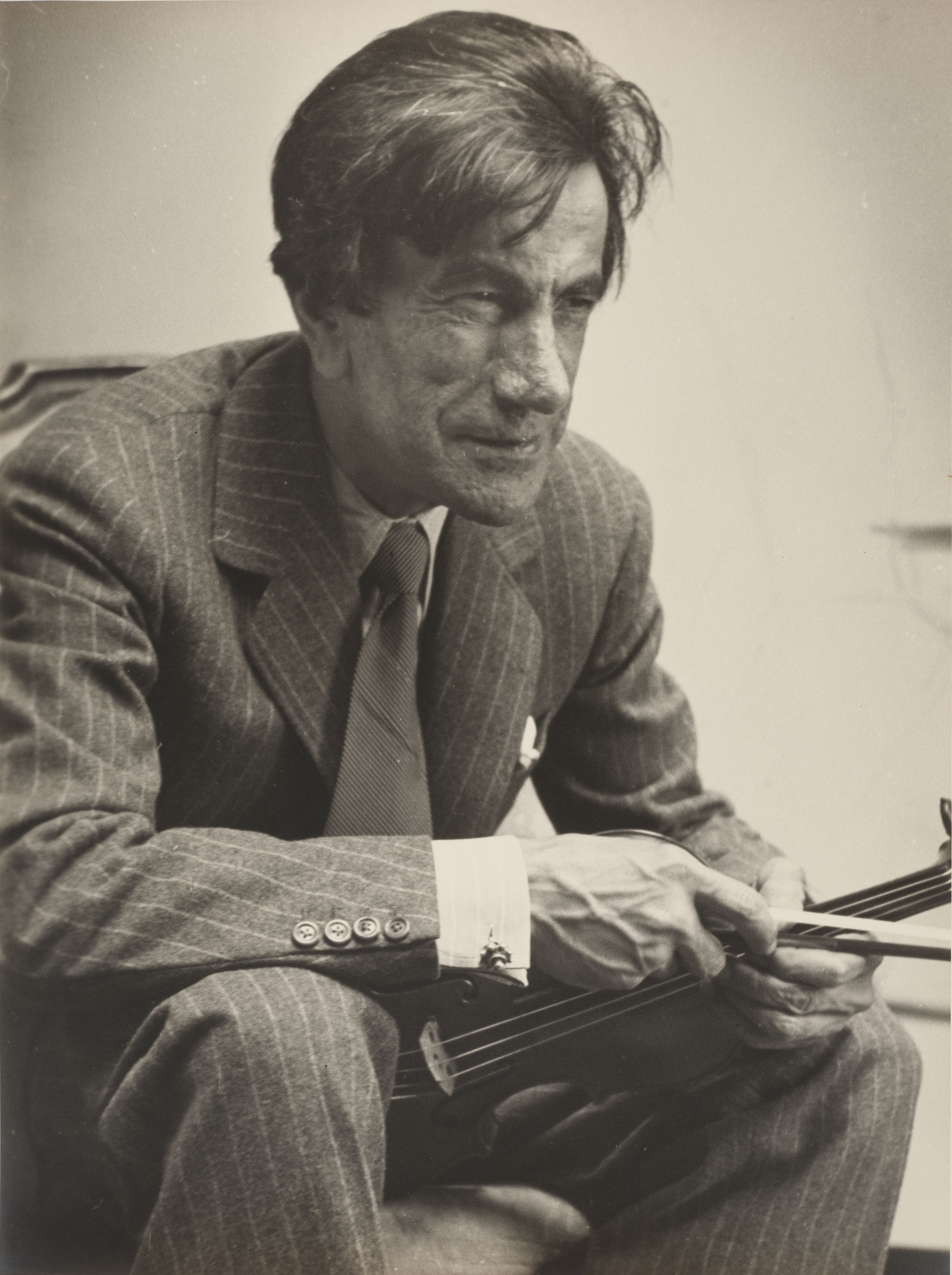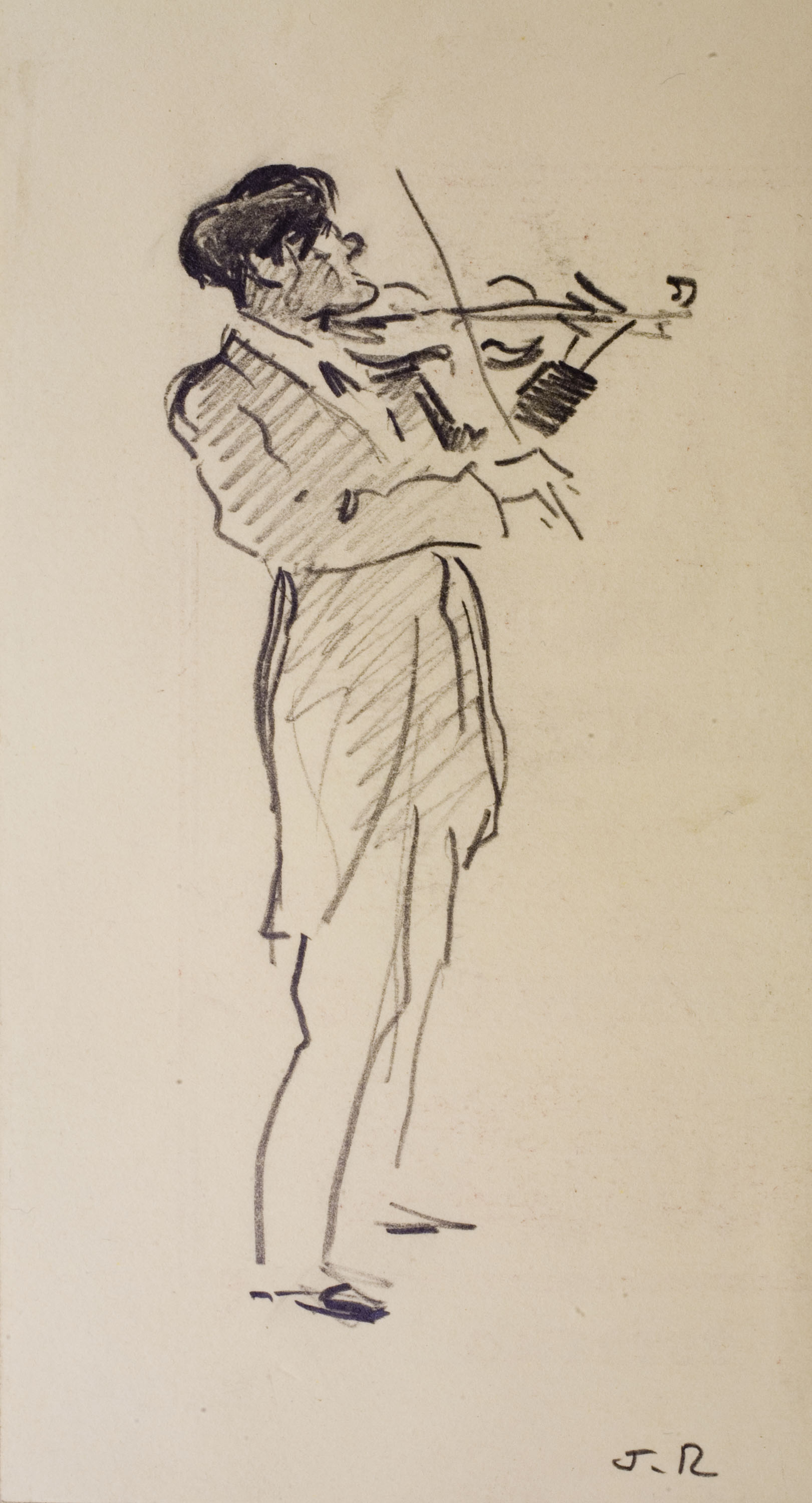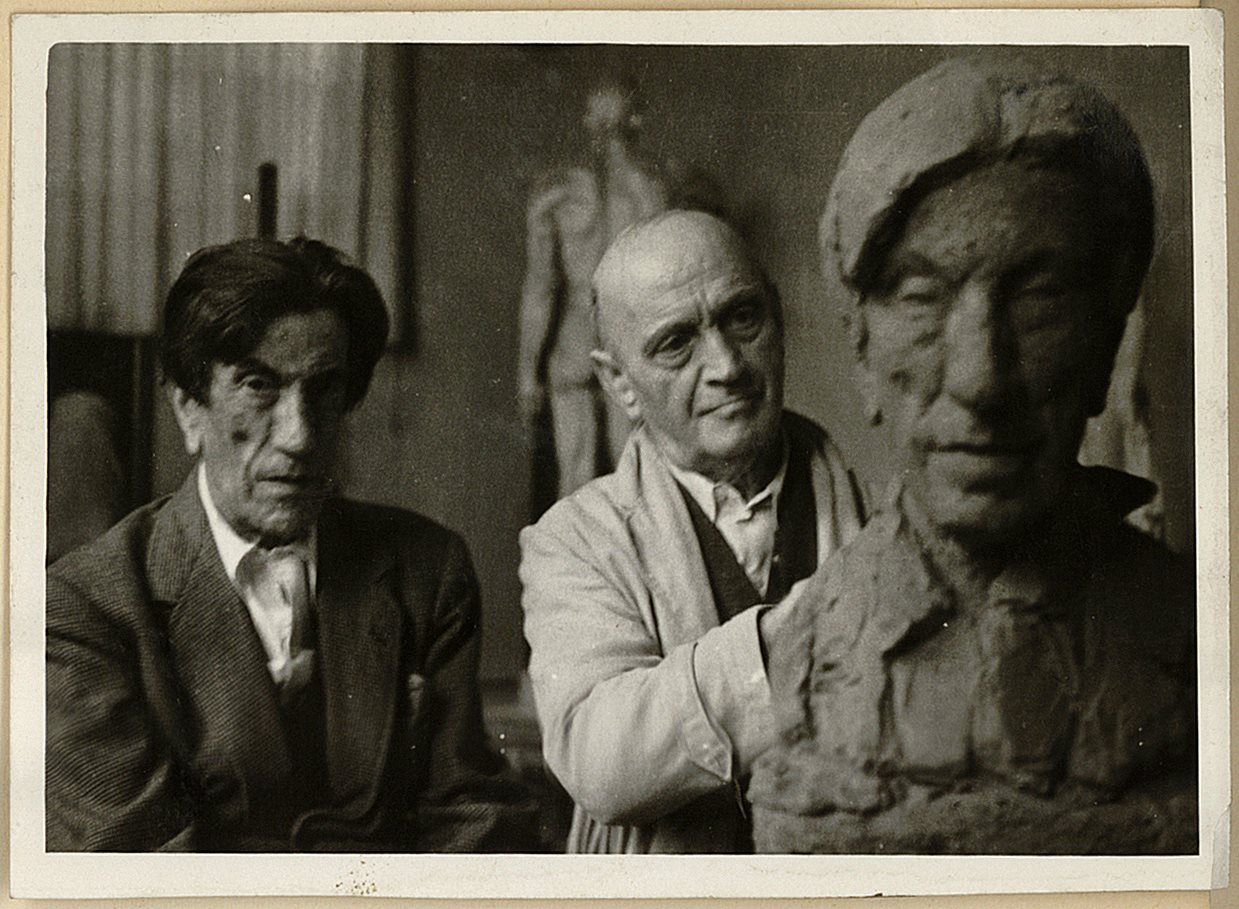The restoration of Pau Gargallo’s sculpture The Violinist, which we have talked about in the blog, is making good progress. Today we shall see who the musician was that inspired the artist to make the sculpture: Francesc Costa. A violin teacher at the Music Conservatory tells us his story.
Judit Bofarull
Who was Francesc Costa?
“I’m Francesc Costa’s granddaughter,” Alícia said to me one morning in autumn, after bursting into my office like a whirlwind.
One of the classrooms in the Municipal Music Conservatory of Barcelona bears his name and, despite having passed it every day for six years, when I wanted to find it I had to search blindly around the entire first floor.
Who was this violinist, born in 1891 in a humble vaqueria (dairy) in Plaça Tetuan in Barcelona, who was to become an extraordinary musician known the world over? And how could it be that I knew so little about him? The first thing I did was to try to listen to him, to look for a recording, if there were any, and see if the memories of grandchildren and students had been sweetened by memory or were a faithful reflection of the artist’s exceptional talent.

Otho Lloyd, Portrait of Francesc Costa, circa 1944
When I was lucky enough to be able to listen to him, having found a shellac record made in 1911, I got goose pimples. All the wonderful things that I had been told about him were an understatement: a rounded velvety sound, a refined lively technique, a precise electric articulation, an expressiveness full of tenderness and warmth … His story had me hooked.
The maestro Costa
“Costa”, as his colleagues and students called him, besides being a person of an exceptional human stature, was an extraordinary violinist. His sound was indescribably beautiful, and his mastery of both the bow and his left hand was infinite.
He gave concerts all over the world. His concert tours visited the whole of Spain and Europe, Africa and South America. Francesc Costa had a solid technique and enjoyed an enviable virtuosity that put him on a par with the finest violinists on the international scene. He was regularly invited to be on the panel of judges in various international violin competitions, such as the Jacques Thibaud International Competition in Paris or the Brussels Conservatory’s Competition.
In Barcelona, his annual Saint Stephen’s Day (26 December) concerts given in the Palau de la Música Catalana were legendary. Families who never went to classical music concerts did so on that public holiday, going to listen to “Costa’s concert”. Every year the hall was jam packed with people eager to see and hear “the most brilliant and bohemian of Spanish violinists,” in the words of the composer Joaquín Turina. He also used to give concerts, many of them for charity, in other halls in the city, such as the Col·legi d’Advocats, the Casal del Metge and the Reial Cercle Artístic.
He studied in Barcelona with the maestro Ibarguren, and in 1909, with a scholarship from Barcelona City Council he went to study in Brussels with the maestro Alfred Marchot. He finished his studies there and won First Prize at the Royal Conservatory of Brussels.
When he returned from Brussels he spent some years giving concerts all over the world. He would have liked to devote himself to it, but his father, who was blind, told him, “Oh, my son, if you don’t stop going here there and everywhere I shall die.” And so it was that in 1922 he entered the Barcelona Municipal School of Music as a violin teacher. There he was a colleague of Eduard Toldrà, to whom he gave some violin lessons, and of Joan Massià, a chamber music teacher who took over Francesc Costa’s violin class when he died.
He and Toldrà were great friends all their lives. One lovely example of this was their collaboration in Toldrà’s farewell concert as a violinist, given in 1950 at the Palau de la Música Catalana, where they played Johann Sebastian Bach’s Concerto for Two Violins, accompanied by the Barcelona Municipal Orchestra. At the end they were given a historic ovation by the audience.
Costa and the fine arts
The figure of Francesc Costa inspired many artists of the time. The ugliness of his face, disfigured by the smallpox he suffered as a boy, served as a model for artists as diverse as Ramon Casas, Valentín de Zubiaurre, Anglada-Camarasa, Pau Gargallo and Manolo Hugué. He was friendly with all of them, and they portrayed him, capturing in his pockmarked face the intensity and the power of his personality. They said that his was a beautiful ugliness. The exhibition that was put on a few years ago at the Reial Cercle Artístic with more than 30 drawings, caricatures and oil paintings inspired by him was surprising.
His figure, tall and slender, his penetrating gaze and his hair, always tousled, made him a bohemian artist capable of charming anyone. The tailcoat, the violin under his chin and the movements that the music he was playing provoked in him: all these things contributed to his eclectic style and animal magnetism. Whenever he picked up the violin he seemed to coil up like a rattlesnake, becoming as one with the music that came from within him and nourished him.
The love of his life, Berta Willotte, was an affair like those in the classic novels of the nineteenth century. Berta and Francesc loved one another all their lives, and only when she became a widow could they marry. Just nine years later, on 17th September 1959, Francesc Costa died. Musicians and friends of his carried his coffin to Plaça de Catalunya, and there he was posthumously awarded the Reial Cercle Artístic’s medal.
Let’s save the violinist
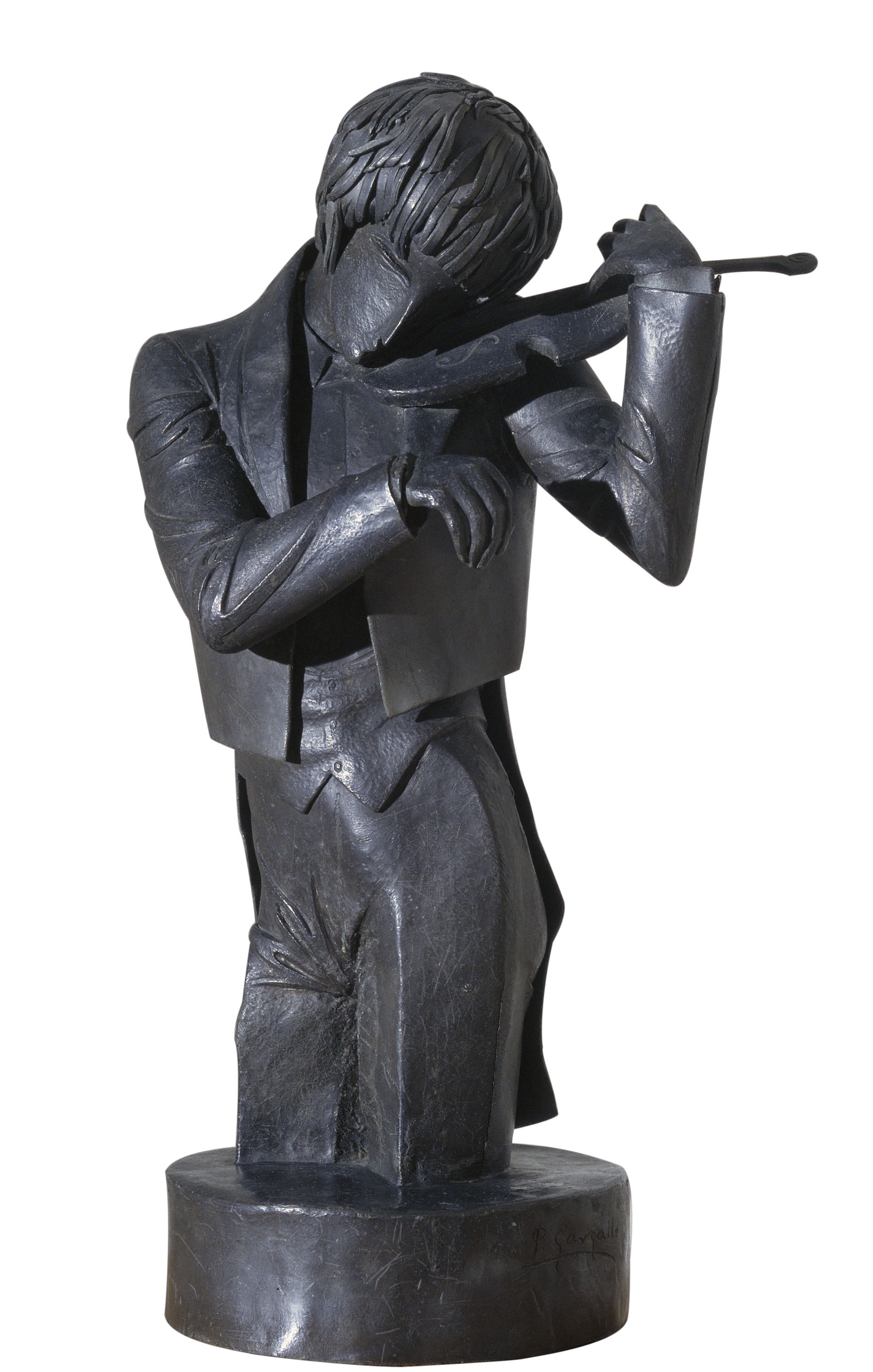
Pablo Gargallo, The Violinist, 1920
Who was Francesc Costa? Curiously, it is thanks to the fine arts that his figure has endured rather than to his music. “Let’s save The Violinist,” his granddaughter Alicia says to me. “Let’s save the violinist,” his grandson Carlos demands. Let’s save the violinist and recover the memory of one of the most outstanding artists this country has ever produced. And let the memory of him do justice to the great violinist that he was and to whom all those of us who have come afterwards are, partly, indebted.
Judit Bofarull
Violin teacher
Municipal Music Conservatory of Barcelona
Related links
The Violinist by Pablo Gargallo: a question of incompatibility
The violinist by Pablo Gargallo. Conservation-restoration
‘El violinista’ de Pablo Gargallo / ‘The violinista’ by Pablo Gargallo, vídeo 04:17 min

